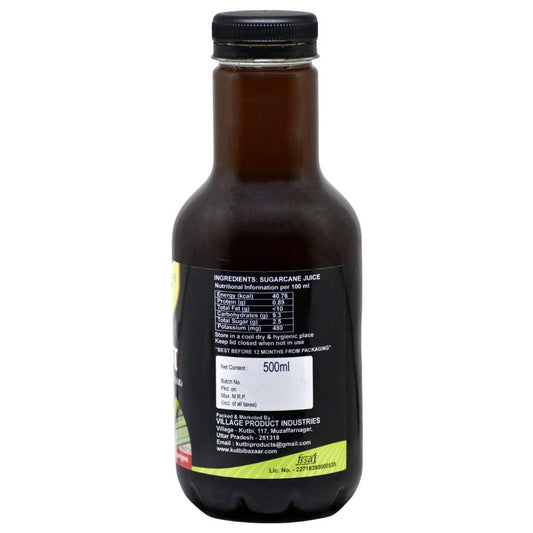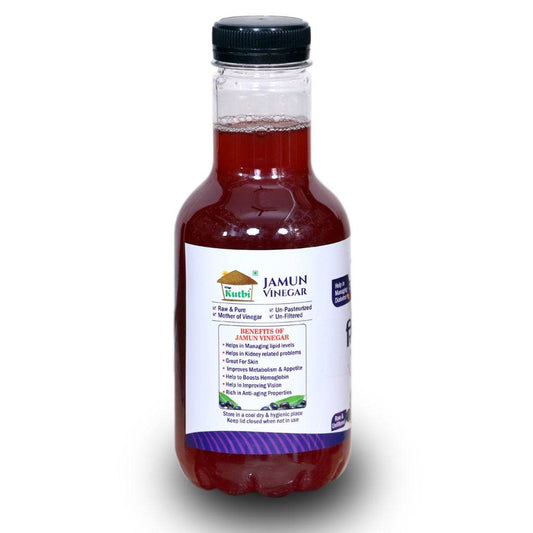
घी क्या है? कौन सा घी सबसे अच्छा है और रोज़ाना कितना खाना चाहिए?
Gaurashtra Officialशेयर करना
स्वर्ण अमृत: घी की यात्रा और उसके लाभों को समझना
भारतीय घरों में पारंपरिक रूप से इस्तेमाल होने वाला घी, पाककला और औषधीय पद्धतियों में एक अद्वितीय स्थान रखता है। हमारे खाने का स्वाद बढ़ाने से लेकर आयुर्वेदिक उपचारों में सहायक होने तक, घी सदियों से हमारी जीवनशैली का अभिन्न अंग रहा है। लेकिन क्या आपने कभी सोचा है कि घी असल में क्या है और इसे इतना सम्मान क्यों दिया जाता है?
यह लेख आपको घी की जटिल दुनिया से परिचित कराएगा - इसके प्रकार, लाभ और विज्ञान जो इसे इतना विशेष बनाता है।
घी क्या है?
घी एक शुद्ध मक्खन है, जिसे मक्खन (मक्खन नहीं) को गर्म करके दूध के ठोस पदार्थ और पानी को निकालकर शुद्ध वसा बनाकर बनाया जाता है। हालाँकि यह प्रक्रिया सरल लग सकती है, लेकिन इसका सार दूध के प्रकार और उसे तैयार करने की विधि में निहित है। आमतौर पर उपलब्ध घी के दो मुख्य प्रकार हैं:
1. गाय का घी - गाय के दूध से बना, पेट के लिए हल्का और याददाश्त और पाचन को बढ़ाने के लिए जाना जाता है।
2. भैंस का घी - भैंस के दूध से बना, वसा से भरपूर और शारीरिक रूप से कठिन गतिविधियों में लगे लोगों के लिए आदर्श।
प्रत्येक प्रकार अलग-अलग उद्देश्यों की पूर्ति करता है, इसलिए व्यक्तिगत स्वास्थ्य आवश्यकताओं और जीवनशैली के आधार पर चयन करना महत्वपूर्ण है।
घी के लाभों के पीछे का विज्ञान
आयुर्वेद में, घी सिर्फ़ खाना पकाने की सामग्री से कहीं बढ़कर है। यह ऊर्जा का एक ऐसा भंडार है जो न सिर्फ़ शरीर को बल्कि मन को भी पोषण देता है। जानिए कैसे:
- बेहतर पाचन: घी भोजन को पचाने और उसे ऊर्जा में बदलने में मदद करता है। तेलों के विपरीत, जो पाचन क्रिया को धीमा कर सकते हैं, घी चयापचय क्रिया को तेज़ करता है, जिससे पोषक तत्वों का बेहतर अवशोषण सुनिश्चित होता है।
- संज्ञानात्मक क्षमता में सुधार: गाय का घी मानसिक रूप से व्यस्त लोगों के लिए विशेष रूप से लाभकारी है। इसकी अनूठी संरचना याददाश्त, एकाग्रता और समग्र मस्तिष्क स्वास्थ्य को बढ़ावा देने में सहायक मानी जाती है।
- शारीरिक स्फूर्ति: दूसरी ओर, भैंस का घी एथलीटों और मांसपेशियों का निर्माण या वज़न बढ़ाने की चाह रखने वालों के लिए आदर्श है। यह ऊर्जा का एक समृद्ध स्रोत है जो तीव्र शारीरिक गतिविधि को बढ़ावा देता है।
- उम्र बढ़ने में देरी: घी का नियमित सेवन जोड़ों और हड्डियों के स्वास्थ्य को बनाए रखने में मदद करता है, भंगुरता और झुर्रियों और कमजोर ऊतकों जैसे उम्र बढ़ने के संकेतों को रोकता है।
-
समग्र उपचार: आयुर्वेद में, घी का उपयोग अक्सर पंचगव्य चिकित्सा में इसके कायाकल्प गुणों के कारण किया जाता है। शारीरिक क्रियाओं को संतुलित करने की इसकी क्षमता इसे पारंपरिक चिकित्सा का एक अनिवार्य अंग बनाती है।
घी और कोलेस्ट्रॉल का मिथक
एक आम ग़लतफ़हमी है कि घी अपनी वसा की मात्रा के कारण हानिकारक होता है। हालाँकि, बिलोना जैसी पारंपरिक विधियों से बनाए जाने पर, घी में लाभकारी असंतृप्त वसा होती है जो हृदय के स्वास्थ्य को नुकसान पहुँचाने के बजाय उसे स्वस्थ रखने में मदद करती है।ट्रांस फैट से भरपूर बड़े पैमाने पर उत्पादित घी या मक्खन के तेलों के विपरीत, शुद्ध बिलोना घी हानिकारक योजकों से मुक्त होता है। नियमित शारीरिक गतिविधि के साथ, इसे संतुलित मात्रा में सेवन करने से न केवल कोलेस्ट्रॉल का निर्माण रुकता है, बल्कि समग्र जीवन शक्ति भी बढ़ती है।
घी के प्रकार: पारंपरिक बनाम आधुनिक
घी कैसे बनता है, यह समझना इसके स्वास्थ्य लाभों को समझने की कुंजी है। यहाँ तीन मुख्य विधियों की तुलना दी गई है:
1. पाश्चुरीकृत घी: एक आधुनिक तरीका जिसमें दूध से मलाई अलग करके घी बनाया जाता है। सुविधाजनक होने के बावजूद, इससे अक्सर संतृप्त वसा की अधिकता वाला उत्पाद बनता है, जिससे हृदय गति रुकने और कोलेस्ट्रॉल बढ़ने का खतरा रहता है।
2. सेमी-बिलोना घी: एक संकर विधि जिसमें मथने से पहले क्रीम का आंशिक किण्वन किया जाता है। हालाँकि यह पाश्चुरीकृत घी से हल्का होता है, लेकिन इसमें पारंपरिक बिलोना घी के समग्र लाभ नहीं होते।
3. बिलोना घी: घी बनाने का स्वर्णिम मानक। दूध को दही में बदला जाता है, जिसे मथकर मक्खन निकाला जाता है। इस मक्खन को धीमी आँच पर पकाकर शुद्ध, पोषक तत्वों से भरपूर घी बनाया जाता है। अपने औषधीय गुणों के लिए प्रसिद्ध, यह घी का सबसे शुद्ध रूप है।
अपने आहार में घी शामिल करें
अधिकतम लाभ प्राप्त करने के लिए, घी का सेवन सीमित मात्रा में करना आवश्यक है:
- सक्रिय व्यक्ति: जो लोग प्रतिदिन व्यायाम करते हैं, उनके लिए 2-3 बड़े चम्मच घी आवश्यक ऊर्जा प्रदान कर सकता है।
- गतिहीन जीवनशैली: कम शारीरिक गतिविधि वाले लोगों के लिए, रोज़ाना 1-2 चम्मच लेना आदर्श है। इसे अपने खाने में मिलाएँ—चावल पर छिड़कें, या सब्ज़ियाँ पकाते समय इस्तेमाल करें।
याद रखें, संतुलन ही सबसे ज़रूरी है। ज़्यादा सेवन, यहाँ तक कि शुद्ध घी का भी, शरीर में अनावश्यक चर्बी जमा हो सकती है।
घी और आध्यात्मिक अभ्यास
वैदिक परंपराओं में, हवन और यज्ञ जैसे धार्मिक अनुष्ठानों में घी की महत्वपूर्ण भूमिका होती है। ऐसा माना जाता है कि घी प्रसाद की कंपन ऊर्जा को बढ़ाता है, जो शरीर और आत्मा दोनों के पोषण का प्रतीक है।
यही सिद्धांत हमारे भीतर भी लागू होते हैं। घी पाचन अग्नि को प्रज्वलित करता है, जिससे शरीर का आंतरिक पारिस्थितिकी तंत्र सुचारू रूप से कार्य करता है।
प्रामाणिक घी चुनने की चुनौती
आज के बाज़ार में, असली घी चुनना मुश्किल हो सकता है। पारंपरिक तरीकों से बने घी की तलाश करें और प्रयोगशाला परीक्षणों से उसकी शुद्धता की पुष्टि करें। एक विश्वसनीय NABL-प्रमाणित प्रयोगशाला रिपोर्ट यह सुनिश्चित कर सकती है कि उसमें कोई हानिकारक मिलावट न हो।
यदि संभव हो तो, विश्वसनीय स्थानीय उत्पादकों से घी खरीदें जो पारंपरिक तरीकों का पालन करते हैं, या फिर घर पर स्वयं घी बनाने पर भी विचार करें।
परंपरा को पुनः खोजने का आह्वान
घी सिर्फ़ एक आहार विकल्प से कहीं बढ़कर है; यह हमारी विरासत से जुड़ा एक सूत्र है। इसकी तैयारी, इसके फ़ायदों और महत्व को समझकर, हम ऐसे सोच-समझकर चुनाव कर सकते हैं जो हमारे स्वास्थ्य और आध्यात्मिक कल्याण के अनुकूल हों।
आइए हम अपने पूर्वजों के ज्ञान से जुड़ें और घी को न केवल एक सुपरफूड के रूप में, बल्कि समग्र जीवन के प्रतीक के रूप में अपनाएं।






